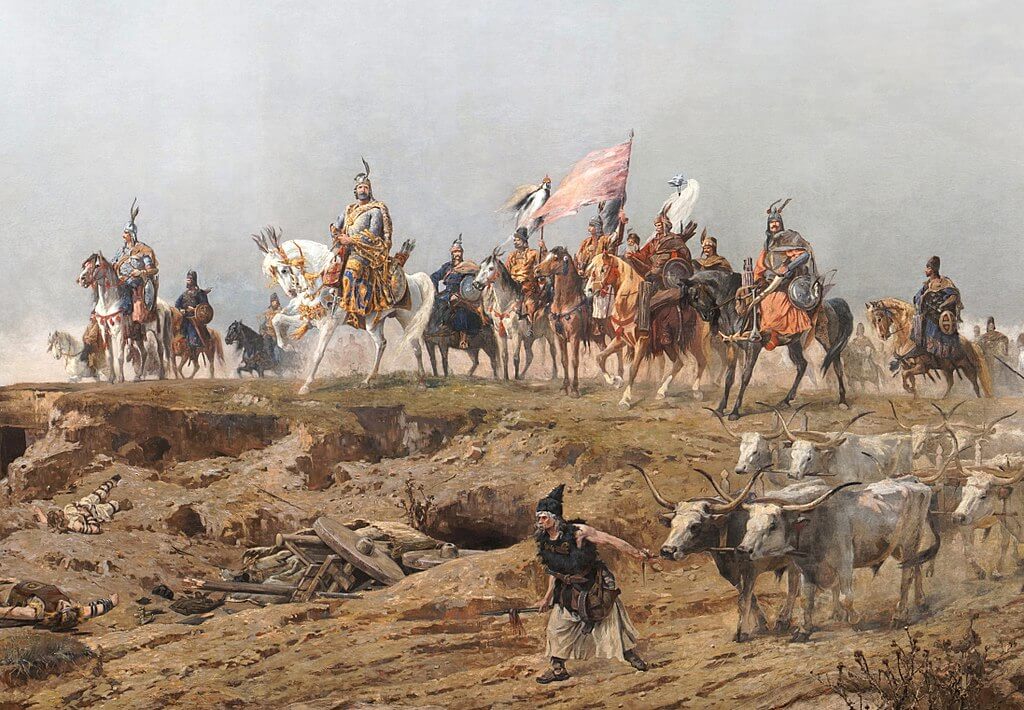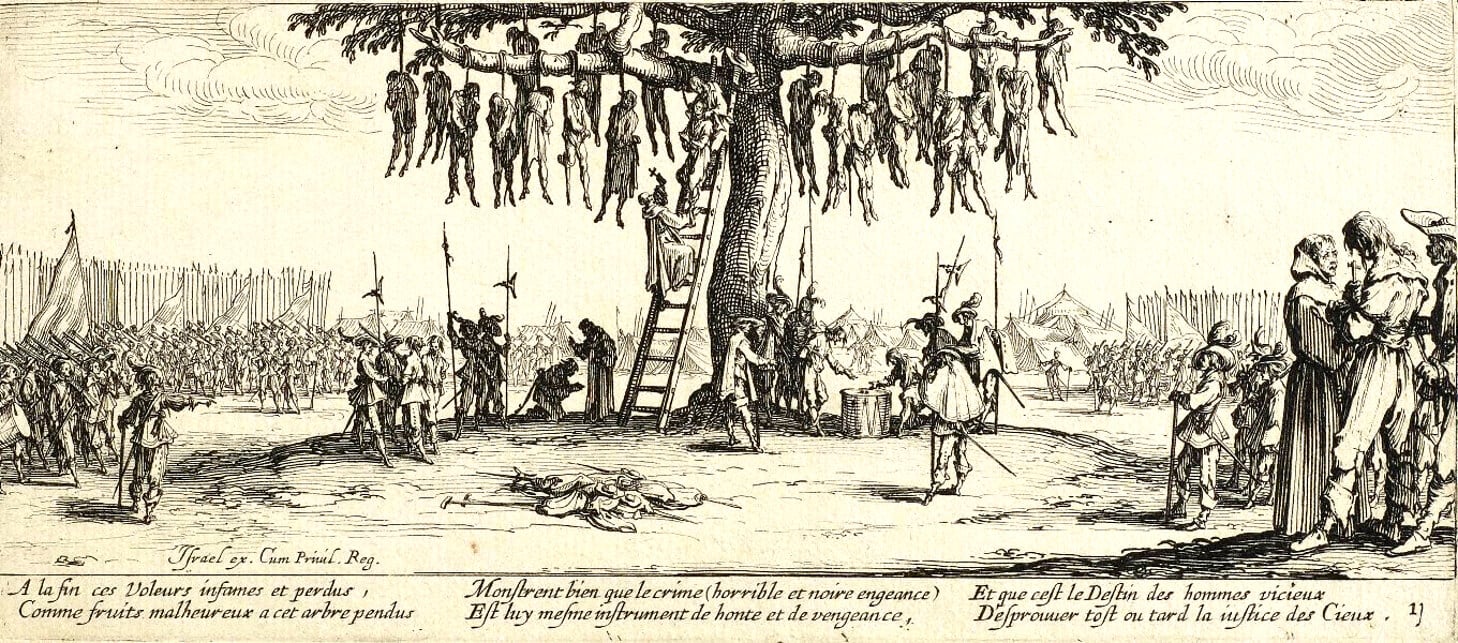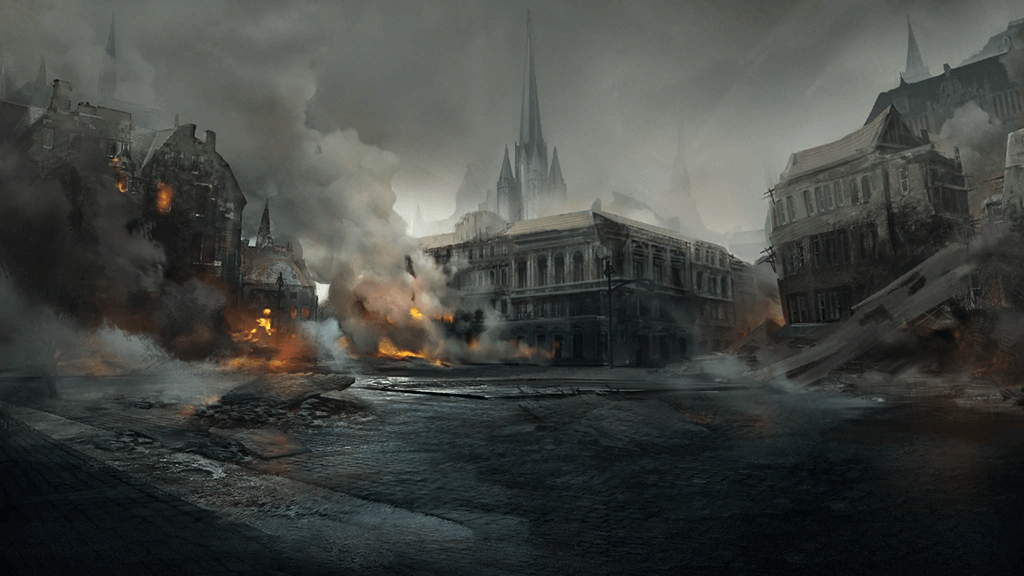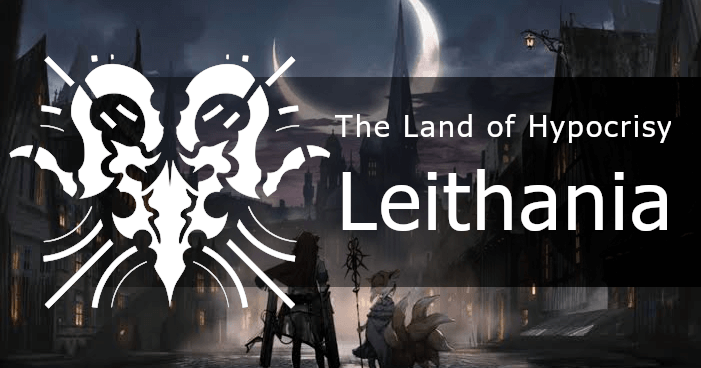Leithania
Leithania is better to the Infected than most places are. And since everyone here uses Arts, they don't have much reason to fear or persecute them.
And isn't it enough that the Infected can have a decent life here without being sent straight to the gallows?
Well, it's no gallows, but I would say forced euthanasia is no better, right, random Armed Infected #1? Oh well, do forgive my gallows humor. The mention of gallows makes me want to hang my laughter. Ha.
But anyway, Leithania.
When one talks about this land famous for its seemingly benevolent treatment of the Infected (well, used to), one would remember the countless mostly benign discussions on what does the country refer to in our real life history. There are many mentions to many countries; Iceland, from Eyjafjalla. Wales, from Cardigan. Switzerland, from what we have seen so far on the government system as well as their language and social structure. And finally the famous Austro-Hungary, responsible for the Thirty Years War and World War I. I personally believe Leithania is based the most on these two last countries, which when we look at its real life counterparts’ might carry some terrible consequences in the future.
But what happened? Who is the devil here, for the devil is in the details? What will happen because of people's innate stupidity, and how many would die because of it?
Of course, this will only be my interpretation of Leithania, and what you guys think might be completely different. Nevertheless, I hope what I would say here makes sense to you guys. By the way, this article will contain spoilers from Twilight of Wolumonde, Stories of Afternoon, and Rewinding Breeze, don't say I didn't warn you.
And so, without further ado, let us open the curtains on the Land of Hypocrisy.
Real Life Counterpart: Switzerland
Like I have said above, Leithania is mostly based on Switzerland and Austro-Hungary, and here I shall describe why, starting with Switzerland.
Leithania seemingly made up of many nomadic cities, which seemingly also ruled by various factions each. We know there are aristocrats, nobles, and we also know that some cities are ruled by merchants, and others, like Wolumonde, are seemingly ruled by a council made of influential people in the city with one of them leading the council.

26 Cantons of Switzerland, including 6 half-Cantons
What this brings to mind is the Swiss Cantons. Contrary to what many would believe, Switzerland is made of these Cantons who are technically ‘independent’ on their own, only united under the federal council as representatives of these Cantons. On Leithania, this is seemingly represented by the fact that only nobles are mentioned there, but seemingly no kings or emperors.
And to what others might not know, by the de jure, Switzerland has no capital. By the de facto though, its capital is Bern, located in the canton of Bern (and no, not Zurich). This can be seen by how Leithania doesn’t seem to have a fixed capital as well as opposed to Ursus’ Sankt Petersburg and Victoria’s Londinium.
Other than those two points, Switzerland also has their own Gendarmerie, usually located in the ‘more French-aligned’ Cantons. And the use of German language with the ‘more German-aligned’ Cantons. With Leithania, you also have Gendarmerie, with most of them being used to guard a stupid noble’s wedding during Wolumonde event and so couldn’t protect Wolumonde during the event. And the names of streets and places, which are clearly German.
That’s for the references to Switzerland, and now we shall move to the references to Austro-Hungary.
Real Life Counterpart: Austro-Hungary
So one might wonder, why Austro-Hungary, technically Austro-Hungary-Bohemia-Croatia-Slavonia-Bosnia-Herzegovina (no, I didn’t really make that up) during the 16th to 20th century? After all, Austro-Hungary has a ruler, an Emperor even, and Leithania as I postulated has none. Well, there are some points I want to make.
Leitha River
First, the name. In Latin, the name ‘Leithania’ can be translated as ‘of the Leitha (River)’. Leitha River, itself a tribute of the river Danube, is the historical border between Austria and Hungary, hence in the past, Austrian would call their region as Cisleithania, ‘This Side of the Leitha’, with Hungary being Transleithania ‘The Other Side of the Leitha’.

A detail of the Arrival of the Hungarians, panoramic painting by Árpád Feszty and his assistants
The second point is the social structure. Two points that stand out about Leithania is first and foremost, their seemingly benevolent treatment towards the Infected, and later on, the existence of the Winterwisp. To explain these two groups, I shall first explain a brief history of Hungary.
Majority of Hungary was known a long time ago as Pannonia, a region under the administration of the Roman Empire. Then Attila the Hun invaded, then Rome fell, then the Avars invaded and settled there,the Slavs invaded and settled there, and the Franks also invaded the land. It’s not until the Magyars, led by Árpád, that Hungary gained its ‘permanent’ identity. Although many of these nomads eventually settled down, many still lived just like their tribal ancestors. In the world of Arknights, these, are the Winterwisps, those who still hold onto their old ways.

Holy Roman Emperor Maximilian II, portrait by Nicolas Neufchâtel, c. 1566
After a dispute between the Austrian von Habsburgs and Hungarian Zapolya, Hungary was finally united in a Personal Union with Austria and Bohemia under Holy Roman Emperor Maximilian II. As history shows us, Austria is a very pro-Catholic kingdom, fighting against the Christianity Reformation at every step, and both Hungary and Bohemia are lands steeped deep in Protestantism. In Hungary, almost every branch of Christianity then existed. Catholicism, Orthodox, Lutheranism, Calvinism, their freedom of religion unofficially enforced by the Edict of Torda. And in Bohemia, they still regularly received ‘crusades’ against the Hussites there from other Catholic states.
Although the Holy Roman Emperors tried to be fair with their non-Austrian subjects, discrimination and favoritism still existed, especially in regards to the Bohemians. And although the Holy Roman Emperors tried to respect the Edict of Torda, the fact remained that Austria was painfully pro-Catholic, and it showed.
In a sense, this is reflected by how Leithania treats the Winterwisps and the Infected. The Winterwisps, who seem to be mostly Caprinae, were hunted down to the last man by the Leithanien, mostly Elafia, a much 'severe' version of the discrimination against the Bohemians and the Hungarians by the Austrians. And the Infected is tolerated, and yet shunned at the same time, with a prison-like living zone and forced euthanasia, just like how Austria treated their non-Catholic subjects, seemingly tolerated at the surface, yet kept being undermined at every other turn. A true mark of a Land of Hypocrisy.
So where is the linchpin? In Arknights, we have the Great Rift, one can say symbolizing the land of Hungary conquered by the Ottoman and those which are held by Austria. And following that, the most important part, the Attack on Wolumonde, and what I see as the counterpart in history, Second/Third Defenestration (Yeet) of Prague.
Crisis on Leithania, and the Future

A later woodcut of the Second/Third Defenestration (Yeet) of Prague in 1618
So, what is the Defenestration of Prague? As the picture above can show you, it’s basically when the disgruntled Bohemian nobles decided that enough is enough and proceeded to defenestrate the foreign dignitaries demanding something outrageous of them. This happened not once, not twice, but thrice, a proof just how much the other states underestimated these Bohemians (and often time, still do in the modern days). In regards to the one we will talk about here, the second/third one (the actual second is just considered as one-and-a-half), the Bohemians basically rejected Austrian attempts to install a Catholic as King of Bohemia, who will also become the next Holy Roman Emperor, and yeeted the Austrian dignitaries out of the windows, literally.

The Great Miseries of the War, painting by Jacques Callot
The Second/Third Defenestration is accepted widely as the trigger of the Thirty Years War between Imperial/Catholic League against the Anti-Imperial/Protestant League. The 3 decades of war ended in the Peace of Westphalia, which ensured the Princes in the HRE are free to hold whatever Christian faith they want, and to an extent their people, but not before causing the loss of approximately 8 million of lives as well as the utter breakdown of social order.
In Leithania, this is represented by the event Twilight of Wolumonde, in which the Infected of Wolumonde rebelled against authority, somewhat aided by ex-Reunion elements under Mudrock. In the end, Mudrock is able to be defeated, yet Wolumonde still ends up being divided into pieces and taken by other nomadic cities like a slice of pizza, and Leithania finally drops their ‘pretense’ of tolerance for the Infected and treats them just like any other countries in Terra.
In real life, the rebelling Bohemians were put down in a short two years, Prague plundered and pillaged by the victorious Catholics, and around two dozens nobles and civilians were tortured and executed just because they are not Catholics. But even then, it's all too late, the flames of war has burned throughout Holy Roman Empire, if not all of Europe, and shall not be put down until 28 years later.

Everyone sins. For some, it's a sin of omission. So many people sin that way...
They're all so nice until they realize it. That's when they turn desperate.
So I'll make it a lot easier and just kill myself.
Think about it.
It's all about saving lives. More lives.
We have talked long and wide about the hypocrisy of the Leithanien nobles, about how they pretend to care about the Infected yet euthanize them like cattles or pets with incurable cancer, especially after laws were changed following Wolumonde. About how they neglected their duty by drawing Gendarmerie from all cities while Wolumonde suffered from Catastrophe just to guard a wedding and the nobles attending the stupid event, only arriving later on when everything has been too late and proceed to just take the easy path out of it by decommissioning Wolumonde. But Leithania's hypocrisy isn't just restricted to their nobles, it's also entrenched in their people, especially one Thorwald Hawthorn.
Outside the fact of whether or not the 'relaxed' laws on Infected were something sincere or a way for Leithanien to feel good for themselves and their moral superiority, the truth remains that the Infected still have a lot of things better for them compared to say, Ursus. But of course humanity isn't that simple, is it. After the Great Rift and Atro's death, the Infected was the one that threw the proverbial first stone, that even Mudrock and her men remarked on their hypocrisy, and then the people of Wolumonde followed suit, fighting fire with fire. But once again, this won't happen if not for the greatest hypocrite of them all, Thorwald.
He spoke of causing chaos to draw the eyes of the nobles so that Wolumonde would be saved, citing it as the method where they could save as much people as possible... only to try to kill said noble when he came. It might be because of the stupid wedding, genuine hatred, or self-righteous anger, but in the end, Wolumonde never ended up saved, its carcass stripped and divided just like spoils of war. Thorwald said it's all about saving more lives, but now Wolumonde is gone, his father is dead, countless innocents died, Infected or not, Biederman was forced to die as a scapegoat for crimes that are not fully his, and he ended up going and killing himself when his plans failed, leaving Tatjana all alone. If that's not the pinnacle of selfishness and hypocrisy, I don't know what is.
And so the conflict deepens, the hatred burns brighter than ever, and the divide between Infected and non-Infected in Leithania has probably become irreparable. Now the question is not if ‘Thirty Years War’ will happen to Leithania, because it will. The question is how long the ‘war’ will be, and if it will take 8 million deaths until it will end.

Many thanks to RIHQ lore room as well as my other discord servers who helped me with the creation of this article. Once again, all of what I wrote here is my own interpretation on Leithania, and might not be shared by others. I have also tried to simplify historical references so as to make it easier for those who are not fluent in the topic, and therefore apologies for anyone who might feel offended.












